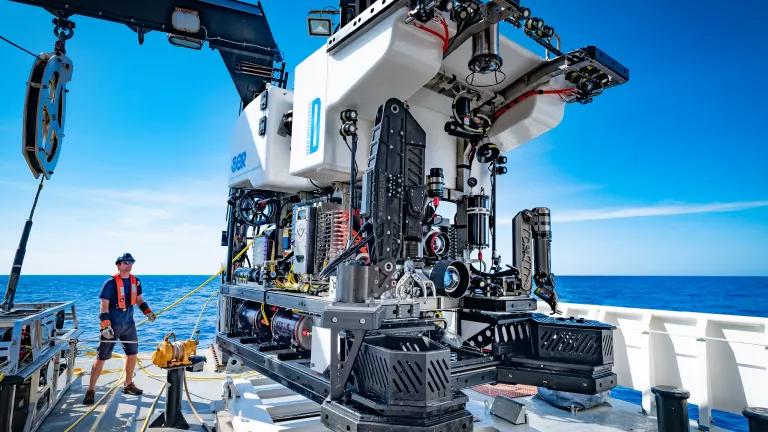New Rule Would Let Oil Industry Harm Most Endangered Whale
The National Marine Fisheries Service has proposed to do, literally, nothing to further protect marine mammals.

A Rice's whale swimming in the Gulf of Mexico
Wayne Hoggard/NOAA
Late last week the National Marine Fisheries Service completed its review of regulations, hurried out during the final full day of Trump's tenure, on the impacts of seismic blasting on marine mammals in the Gulf of Mexico. The Trump regulations were highly controversial; they had been included, for example, on the Biden administration’s initial short list of rules to review and potentially revise. And so, with last week’s announcement, you would have expected the administration to propose changes more in line with the science and the law—and more protective of marine mammals, particularly of the critically endangered Gulf of Mexico (“Rice’s”) whale.
Instead, it has proposed to do, literally, nothing.
As my colleagues and I have written before, seismic blasting is a big problem for marine mammals. It’s the most intense noise humans make in the ocean short of explosives, and it’s known to interfere with marine mammal foraging, breeding, and other vital activities over very large areas. (You can get a sense of the nature of the harm from the animation below.) And seismic noise is known to be especially disruptive to baleen whales, like the Gulf of Mexico whale, who are acutely sensitive to low-frequency sound. In the formal Status Review that the Fisheries Service released in 2016, prior to listing the whale as endangered, the agency’s own scientists concluded that noise from seismic surveys posed a high risk of “eliminating or seriously degrading” the species.
Last week’s proposal from the Fisheries Service corrects some of the poor math in the agency’s Trump-era regulation. Glaringly, however, the agency proposes no additional measures to protect the Gulf of Mexico whale, or any other Gulf marine mammal, beyond what it entertained before. None of the whale’s habitat would be put off limits—an astonishing result given all the new science that has emerged over the last two years. We now know that the whale is an entirely unique species, making it, with fewer than 100 individuals, one of the most endangered marine mammals on the planet. And we now know, from a five-year, government-led study, that it depends on a narrow band of habitat running along the shelf break, across the Northern Gulf.
Earlier this year, the Bureau of Ocean Energy Management, a different agency, completely excluded the whale’s habitat from offshore wind leasing. Last week’s proposal stands in stark contrast to that decision. If the Fisheries Service has its way, the oil and gas industry would be allowed to operate where offshore wind could not.
Why the inconsistency? The fault lies squarely with the permitting division at the Fisheries Service’s Office of Protected Resources. Time and again, that division has been rebuked by the courts for its failure to uphold the standards of the Marine Mammal Protection Act, one of our bedrock environmental laws. The U.S. Marine Mammal Commission, the agency that Congress created to provide oversight, has repeatedly criticized the division’s approach to assessing and mitigating impacts from the activities it authorizes, without redress. This administration needs to take a close look at the division’s record, of which last week’s proposal is the latest terrible example.
And clearly it needs a cohesive set of policies for offshore energy—policies that do not favor dirty energy over clean while imperiling one of the most endangered species in our waters.



